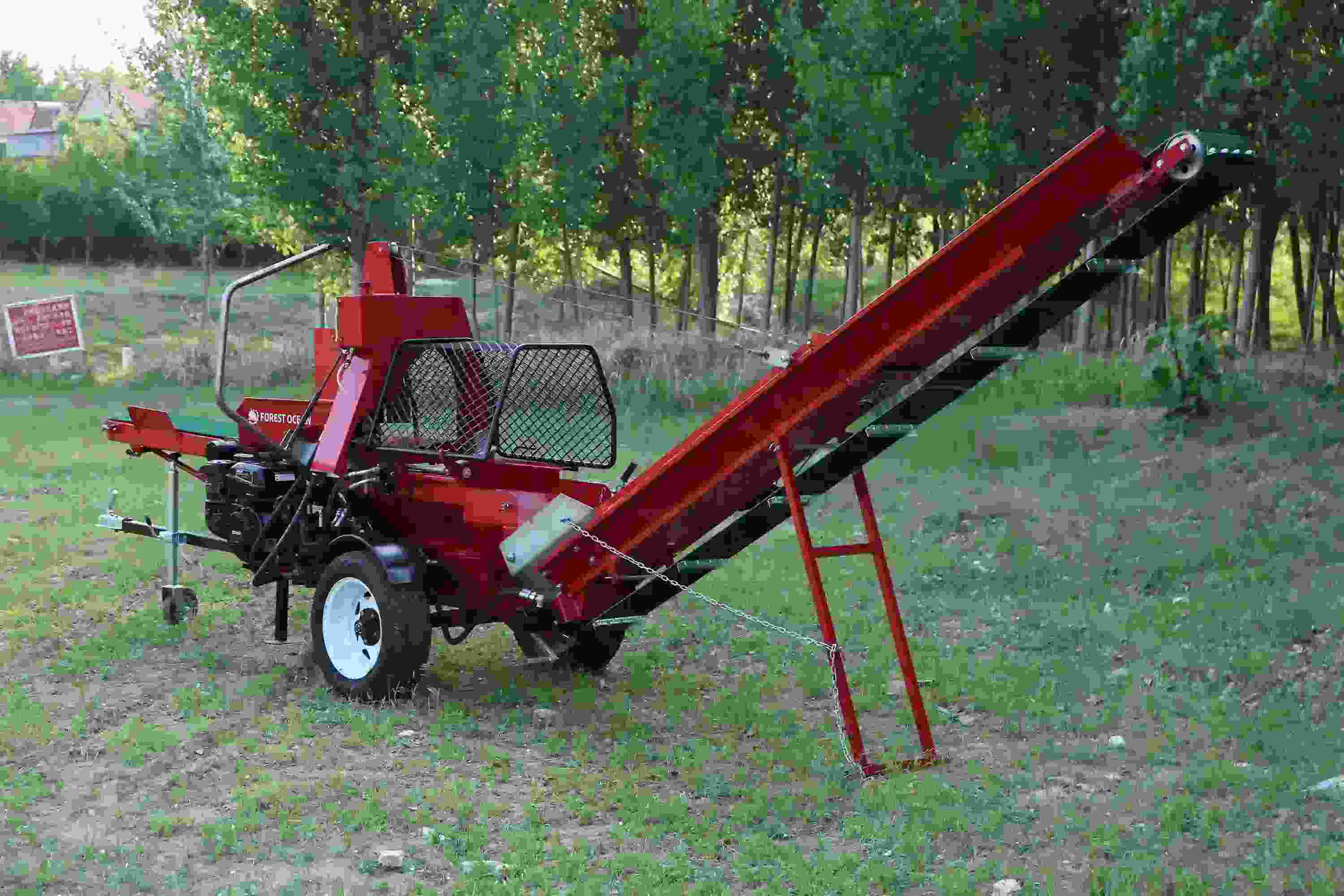Common Issues with Combine Firewood Processors and How to Fix Them
Combine firewood processors are essential machines for efficiently cutting, splitting, transferring, and stacking firewood. They streamline the wood processing operation, making it easier for users to manage their firewood needs. However, like any machinery, they can encounter issues that may affect performance and efficiency. In this article, we will discuss common problems associated with combine firewood processors and provide solutions to help you troubleshoot and maintain your equipment effectively. Insights from Sumber Machinery, a leader in manufacturing durable and reliable firewood processing equipment, will guide our discussion.

1. Engine Starting Issues
Problem:
One of the most common issues users face is difficulty starting the engine of the firewood processor. This can be caused by several factors, including fuel problems, battery issues, or mechanical failures.
Solution:
- Check Fuel Levels: Ensure that there is enough fuel in the tank. If the fuel is old or contaminated, drain it and refill with fresh fuel.
- Inspect the Battery: If the processor has an electric start, check the battery connections for corrosion or looseness. Replace a dead battery if necessary.
- Examine Spark Plugs: Remove and inspect spark plugs for wear or fouling. Clean or replace them as needed.
2. Hydraulic System Failures
Problem:
Hydraulic systems are crucial for the operation of combine firewood processors. Users may experience issues such as slow operation or complete failure of hydraulic functions.
Solution:
- Check Fluid Levels: Ensure that the hydraulic fluid reservoir is filled to the recommended level. Low fluid can cause performance issues.
- Inspect Hoses and Fittings: Look for leaks or damage in hydraulic hoses and fittings. Replace any damaged components immediately.
- Bleed the System: Air trapped in the hydraulic system can cause erratic behavior. Follow manufacturer instructions to bleed the system properly.
3. Cutting Blade Dullness
Problem:
Over time, cutting blades can become dull, leading to inefficient cutting and increased strain on the engine.
Solution:
- Sharpen Blades Regularly: Regularly inspect and sharpen blades according to usage frequency. Use appropriate sharpening tools designed for your specific blade type.
- Replace Blades When Necessary: If blades are excessively worn or damaged beyond sharpening, replace them with new ones from a reputable supplier like Sumber Machinery.
4. Clogged Feed System
Problem:
A clogged feed system can prevent logs from being processed smoothly, causing delays and potential damage to the machine.
Solution:
- Clear Debris: Regularly check for debris buildup in the feed area and clear it out to ensure smooth operation.
- Adjust Feed Speed: If clogging persists, consider adjusting the feed speed settings to accommodate different log sizes and types.
5. Electrical Problems
Problem:
Electrical components may fail due to wear or exposure to elements, leading to operational issues such as failure of lights or controls.
Solution:
- Inspect Wiring: Check all electrical connections for signs of wear or corrosion. Repair or replace damaged wiring as needed.
- Test Fuses: If electrical components fail to operate, check fuses for continuity and replace any blown fuses.
6. Overheating Issues
Problem:
Overheating can occur during prolonged use, potentially damaging engine components and reducing efficiency.
Solution:
- Monitor Operating Temperature: Keep an eye on temperature gauges during operation. If overheating occurs, allow the machine to cool down before continuing use.
- Check Cooling Systems: Ensure that cooling fans are functioning properly and that air vents are free from obstructions.
7. Inconsistent Splitting Performance
Problem:
Users may notice inconsistent splitting performance where logs are not split evenly or require multiple passes.
Solution:
- Adjust Splitter Settings: Review and adjust splitter settings according to log size and type. The standard two/ four-way splitter should be set correctly based on your needs.
- Inspect Piston Operation: Ensure that the piston is functioning smoothly without obstruction or damage.
8. Transport System Malfunctions
Problem:
The transport system may fail to move processed wood effectively due to mechanical issues or blockages.
Solution:
- Check Roller Operation: Inspect rollers for wear or damage that could impede movement. Replace worn rollers as necessary.
- Clear Blockages: Regularly check for blockages in the transport path and clear any debris that could hinder movement.
Conclusion
Combine firewood processors are invaluable tools for efficiently managing firewood production; however, they are not immune to problems that can disrupt operations. By understanding common issues such as engine starting difficulties, hydraulic failures, dull cutting blades, clogged feed systems, electrical problems, overheating issues, inconsistent splitting performance, and transport malfunctions, users can take proactive steps toward troubleshooting and maintenance.
At Sumber Machinery, we pride ourselves on producing high-quality combine firewood processors designed for durability and efficiency. Regular maintenance and prompt attention to issues will ensure your equipment continues to perform at its best for years to come. If you have any questions about our products or need assistance with your firewood processor, feel free to reach out! Together, we can help you keep your operations running smoothly.
- Art
- Causes
- Crafts
- Dance
- Drinks
- Film
- Fitness
- Food
- Games
- Gardening
- Health
- Home
- Literature
- Music
- Networking
- Other
- Party
- Religion
- Shopping
- Sports
- Theater
- Wellness


